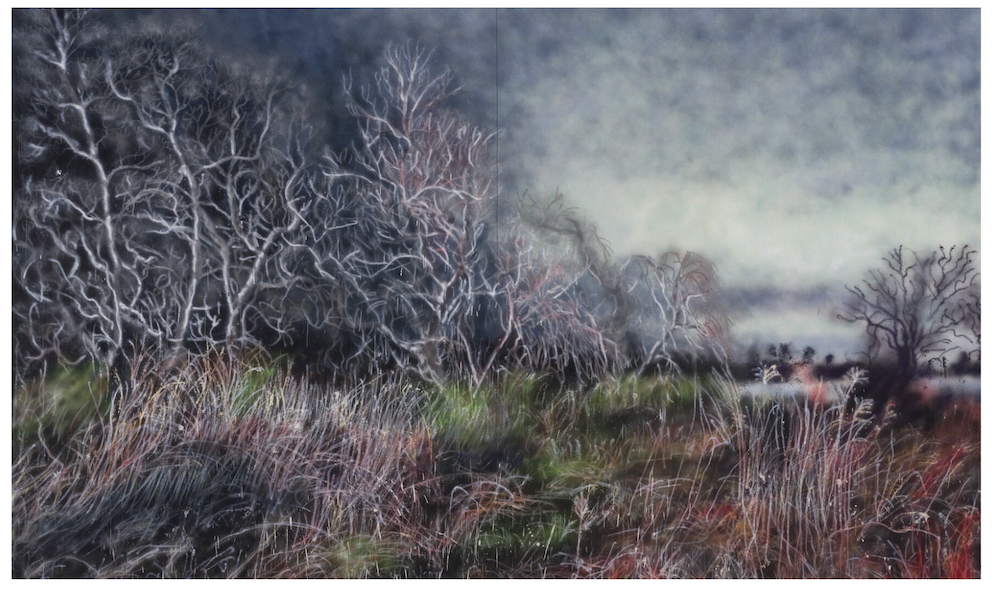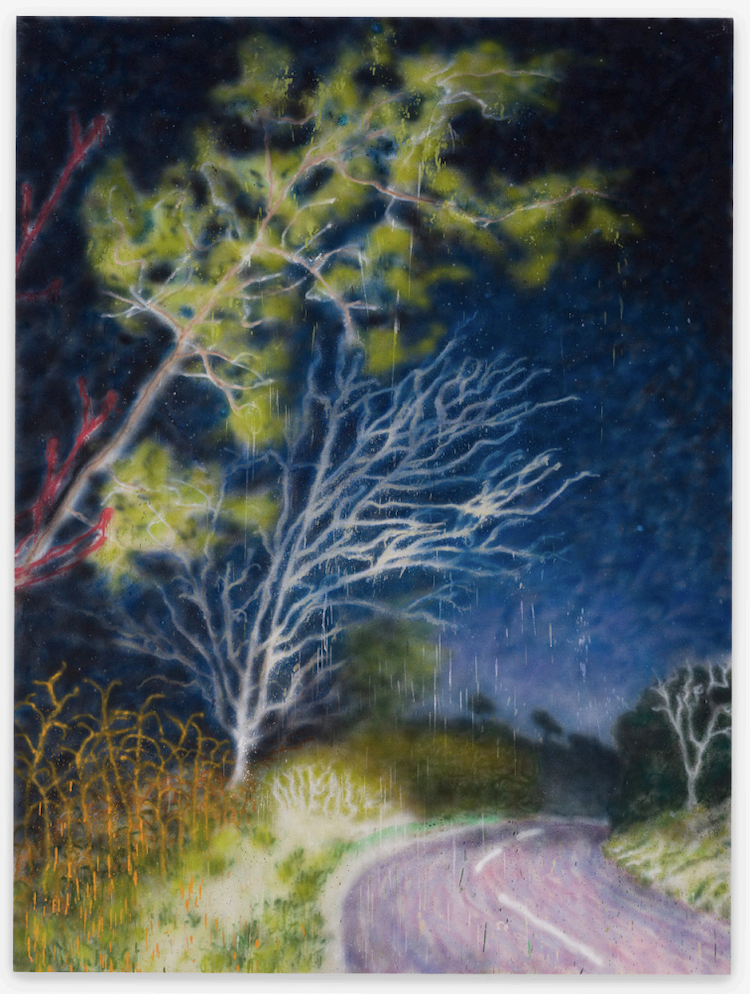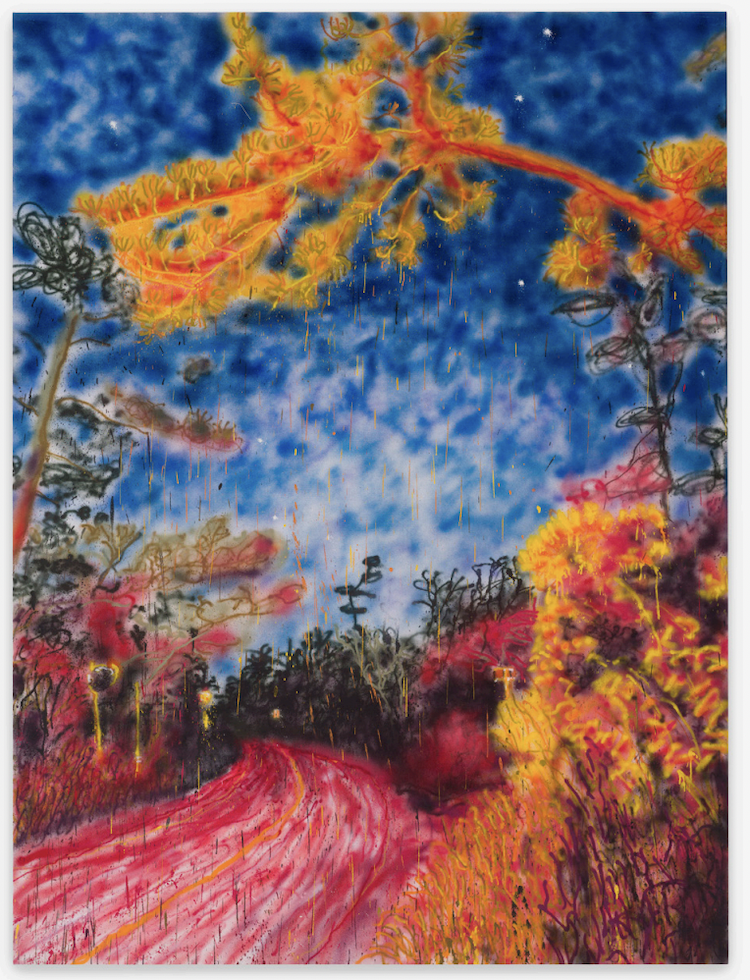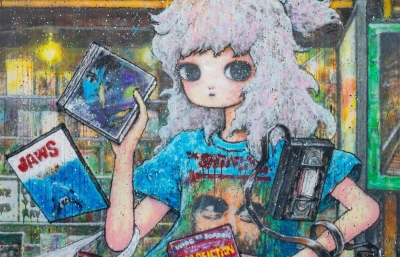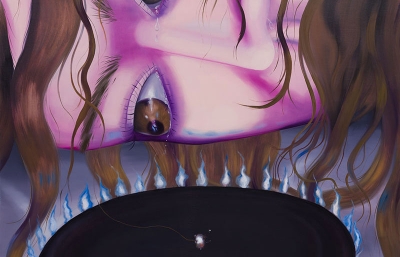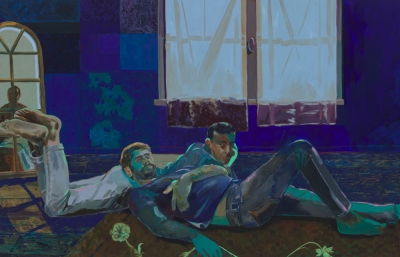Perrotin Shanghai is delighted to present MADSAKI’s solo exhibition, The Night Is Long That Never Finds The Day, the artist’s first solo presentation in China, with a series of landscape paintings to mark a thematic shift in his painting practice.
Having accrued much success and accolades from a painting practice that undermines the dichotomy of high art and low art, MADSAKI's visual resources range from the classics throughout art history to newspaper images and pop culture icons while he "upgraded" spray paint as a fine art medium. MADSAKI was on the outlook for a new direction and perspective in his works. The title of exhibition, taken from a passage in Shakespeare’s seminal tragedy, Macbeth, conveys MADSAKI’s visual translation of the current global situation from his viewpoint.
As the recent global pandemic ravaging continuously throughout the world, keeping people socially distanced and mentally isolated, MADSAKI’s nagging desire to escape physically and psychologically culminated over time. Before spring arrived this year, when tree branches were still barren and covered in snow, the artist went on a nocturnal excursion with his wife and daughter to a deserted beach in the Noto Area of Ishikawa Prefecture, Japan, during their visit to his wife’s hometown. Captivated by the sceneries along a dirt road behind the beach, desolate and rarely frequented even by the locals, he stopped along the way and took many photographs, lit by the moon above and the headlights of his car. Although he had gone back to the very same place multiple times after that, the experience of that particular night locked in the artist’s mind, impelling him to translate it onto canvas.
MADSAKI had always wanted to paint nature, but the questions have been where and how. A self-proclaimed "half city-boy, half nature-lover" began to toil with landscape painting on his visits to the Big Island of Hawaii earlier this year, where his uncle resides. As with all of his previous paintings that come from personal stories and experiences, the recent works depicting nature, on the one hand, pay homage to a place, to his wife’s past, and offer context to her becoming of age for him to relate to; on the other, became a personal journey of self-discovery, healing, and introspection.
Landscape paintings, in either Western or Asian tradition (especially in the arts of China, Japan, and Korea), are associated with cultural prestige and social hierarchies - the former often tied to history paintings and the latter to a literati tradition spun from Confucianism. MADSAKI conceives his latest landscape paintings as self-portraits, the process of which has been deeply personal, introspective, if not selfhealing. The artist confesses his struggles with outright frankness, "It's a genre completely new to me. It makes me feel completely naked. I am comfortable and uncomfortable at the same time."
Coincidentally, as MADSAKI worked on the latest landscapes in April this year, he re-read the hallucinatory prose poetry, A Season in Hell by the precocious French poet Arthur Rimbaud, whose preoccupation with deranged senses, intoxicating circumstances, or even disorienting experiences, not only captivated the artist, but its lyrical imagery, its destruction of poetic forms resonated with MADSAKI's approach to painting. Similar to Rimbaud's cathartic epic that signed off his career in poetry, the appeal in MADSAKI's landscape paintings is the way in which the artist extracts authentic personal experiences that draw on suffering and despair as much as on hope and aspiration.
Being a first-generation immigrant to New Jersey in the early 1980s, his linguistic barriers and being racially visible kept him away from his immediate world. In 2004, his relocation back to Japan was, to some extent, a childhood encore of cultural shocks and alienation. Although both times left him a lasting sense of being the “cultural other,” MADSAKI overcame the binary way of thinking by abolishing any forms of boundaries and categorizations in his works on canvas, as he blurs the boundary between portraiture and landscape paintings in this latest series.
The works on view are unanimously untitled, extending a similar sense of ambivalence found in his previous figurative paintings, where the figures typically wore a smiley face with tears running down their cheeks. For the latest works, MADSAKI adopted a different set of painting techniques using the spray can. He rendered nuanced color schemes with multiple layers over solid forms, while preserving the signature drips on the surface that offers a complex psyche rather than delivering a poignant message. Absent of any human trace in these imageries, the light in the foreground often illuminates the picture to suggest a defiant, if not optimistic, attitude from the viewpoint of the painter/ spectator, while the background constantly receding into a twilight zone is nevertheless lit despite of a general doom and gloom atmosphere.
MADSAKI’s use of colors heightens the contrasting sense of illumination reminds one of many masters of light such as J.M.W Turner. It is also not surprising that MADSAKI would find inspiration in Vincent van Gogh’s The Garden of Saint-Paul Hospital. As van Gogh discovered the use of color that conveyed his feelings, he intensified the emotional charge of his work by combining colors to create harmony on the one hand or contrast on the other. This work has brought MADSAKI to tears, revealing a vulnerability before the omnipotent and behemoth of nature while compelling him to evoke the same emotional response in his paintings.
Famously known for his fast executions, MADSAKI had previously completed a painting within hours from start to finish. These landscapes, however, have taken much longer, from weeks to even months. The length of time taking the artist to complete each painting not only reflects a meditative process of digging deep into one’s emotional reservoir, but also to resonate with the title of the exhibition and the consistent nocturnal theme of this series. Although MADSAKI depicts such a journey through an infinite night that the light of day is nowhere in sight, the artist’s command of the painting medium, his use of color that illuminate the pictures rings true with Albert Camus' phrase scribbled on a piece of a paper cardboard in his studio, "The only way to deal with an unfree world is to become so absolutely free that your very existence is an act of rebellion." —Fiona He



